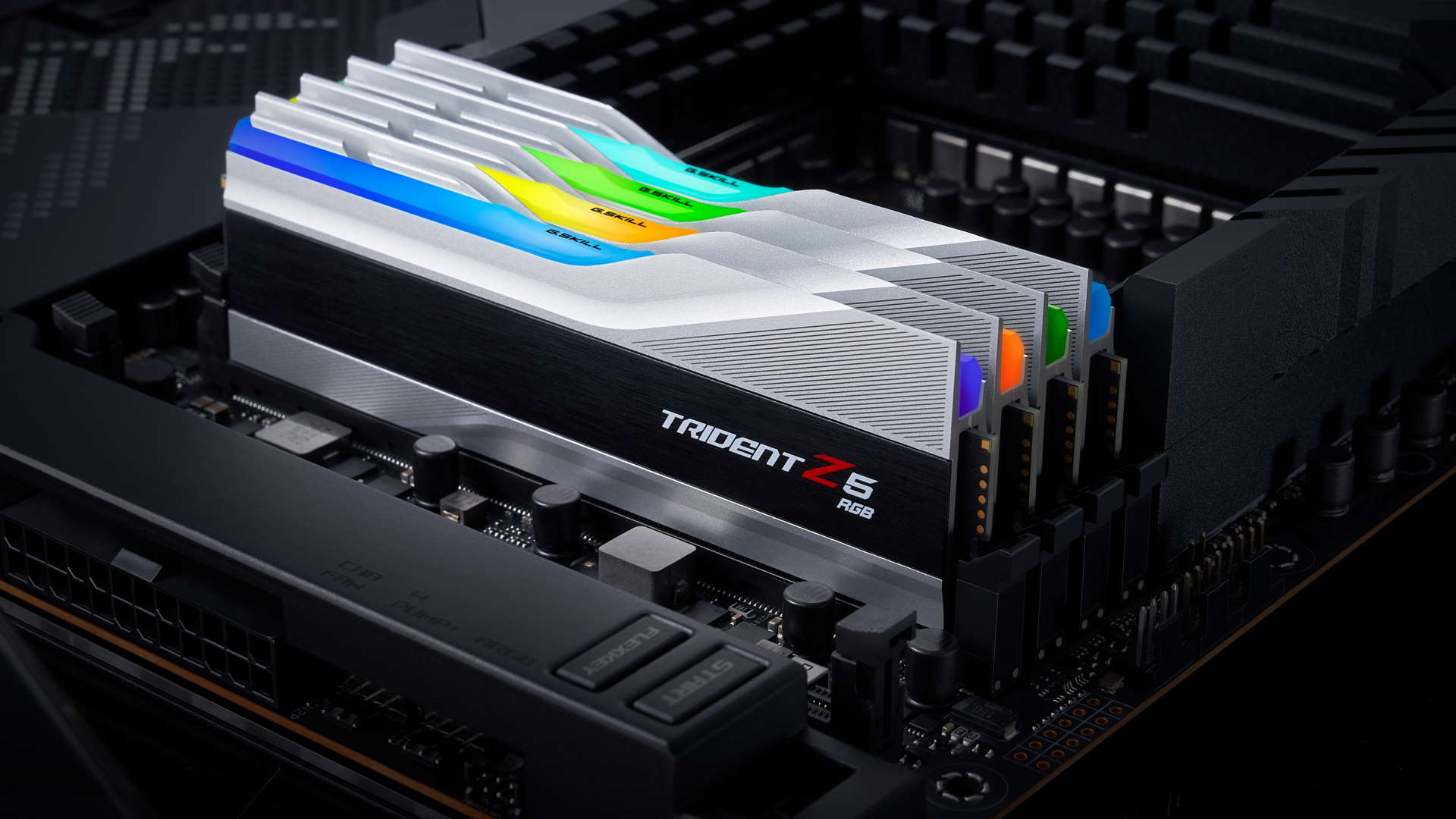Our Verdict
The G.Skill Trident Z5 DDR5-6000 C36 kit is a contender for the best DDR5 kit on the market, but a true analysis of its standing will only come once stocks are on shelves and the pricing becomes reasonable.
For
- It’s very fast – in memory sensitive apps only
- Fantastic design
Against
- High launch price~
- Low availability
- Marginal gaming gains over a good spec DDR4 kit
PC Gamer's got your back
The modern DDR5 standard is off to a rocky start. It’s not because of its performance, but like so much of 2021's tech it's down to supply and demand. So much so that a kit like the G.Skill Trident Z5 RGB DDR5-6000 we’re reviewing here is out of stock everywhere. We know from vendor contacts that it won’t always be like that, with stock levels gradually increasing from January onwards. So, rather than rant about supply and demand issues, we’ll focus on the kit itself as we know that once stocks are available, people will be looking for analysis of the kit, and not outdated rants about availability from a particular point in time.
Hopefully then this review will be more relevant once people can actually buy it...
Whatever all the background noise, you can always rely on G.Skill to release top performance memory. Its high performance Samsung B-Die DDR4 kits are widely regarded as being the best on the market. We always have high expectations of the company, and a DDR5-6000 kit with 36-36-36-76 timings is pretty much as good as you’ll find from a first wave DDR5 kit.
The kit comes in a 2x 16GB capacity with XMP 3.0 support and a 1.30v operating voltage. We've used this kit on a variety of Z690 motherboards and apart from some niggles on pre-release BIOSes, once newer BIOSes arrived the kit ran without issue at the XMP rated speed on all of them.
Looks are always in the eye of the beholder, but from my point of view the G.Skill is a lovely looking kit. Our sample features a silver heat spreader, though there’s a black version too if you prefer. It’s not too in-your-face like some kits can be—like some G.Skill kits can be—and the RGB implementation looks great. Its opaque covering and diffused light is a bit more subtle than some kits with their over the top branding and overly bright eyeball-scalding individual LEDs.
Model Name: G.Skill F5-6000U3636E16GX2-TZ5RS
Memory Type: Unbuffered DDR5
Capacity: 32GB (2x 16GB)
Rated Speed: 6000 MHz
Rated Latency: 36-36-36-76
Tested Voltage: 1.30v
Warranty: Limited Lifetime
Intel XMP 3.0 (Extreme Memory Profile) Ready
G.Skill has its own RGB app, called the Trident Z Lighting Control. It’s a lightweight app, and just a 6MB download. It’s refreshing to see a simple app like this instead of some of the excessive motherboard control software that users are often forced to deal with (here’s looking at you, Asus Armory Crate). A quick play with the Trident app presented us with no issues. Standard effects and controls are all present and correct. However, if you already have motherboard control apps, the G.Skill kit should seamlessly integrate with Asus, Gigabyte, MSI and ASRock’s RGB control software, too.
With a spec like this, you should expect good performance, and the G.Skill modules certainly offer that, though as is often the case with fast memory, the benefits tend to reveal themselves in rather limited ways. At other times, a fast kit can end up performing within a margin of error of a kit that’s half the speed.
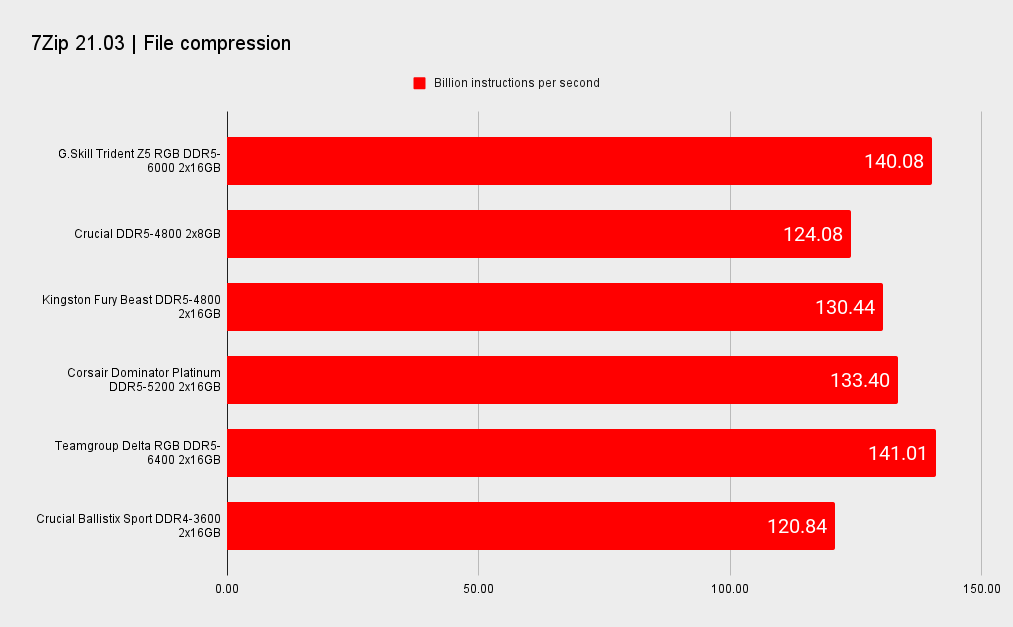
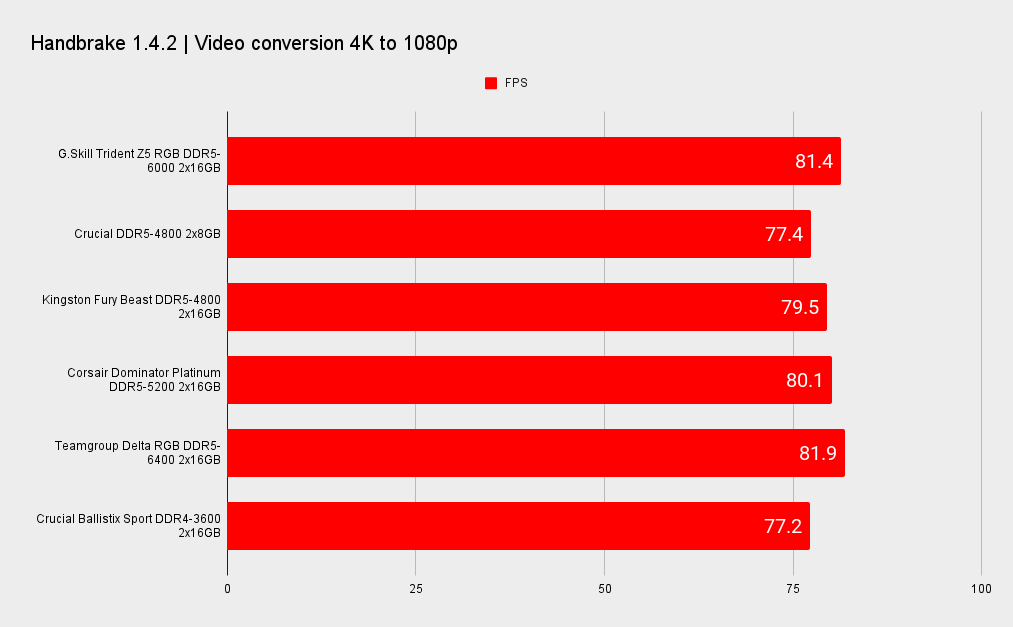
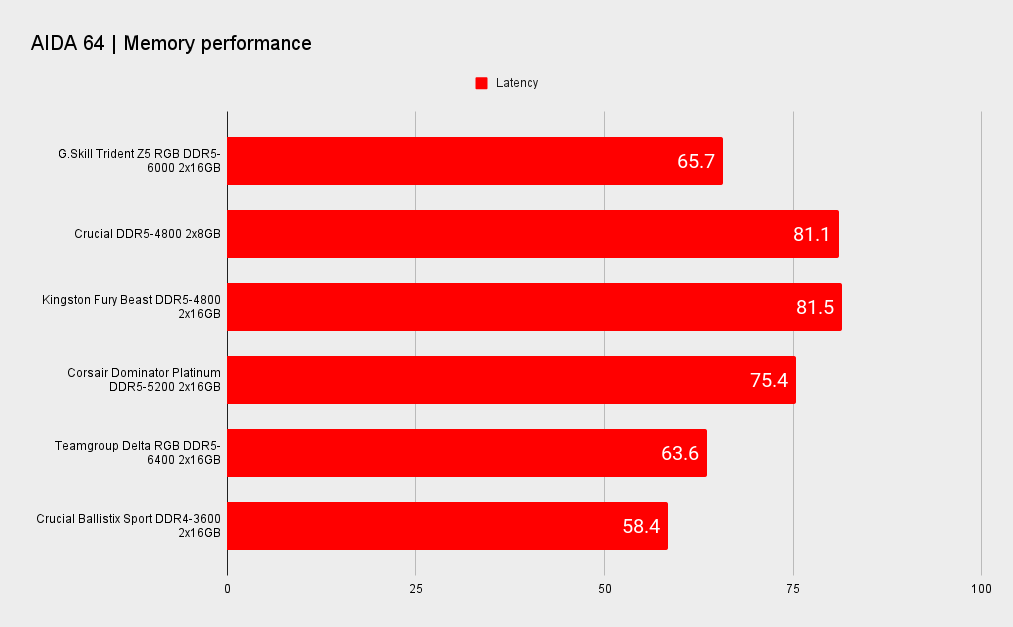
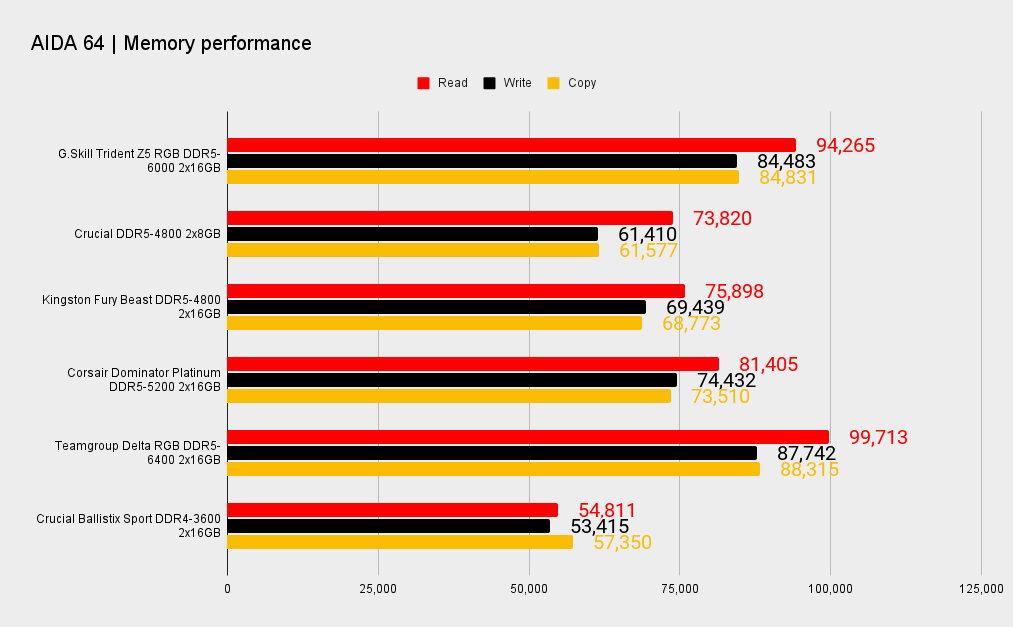
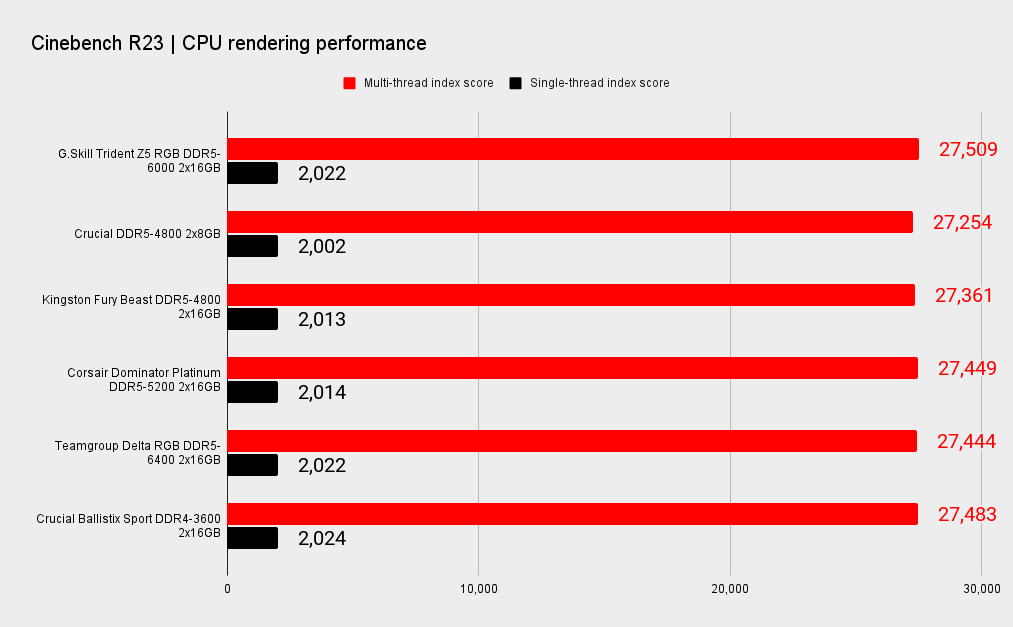
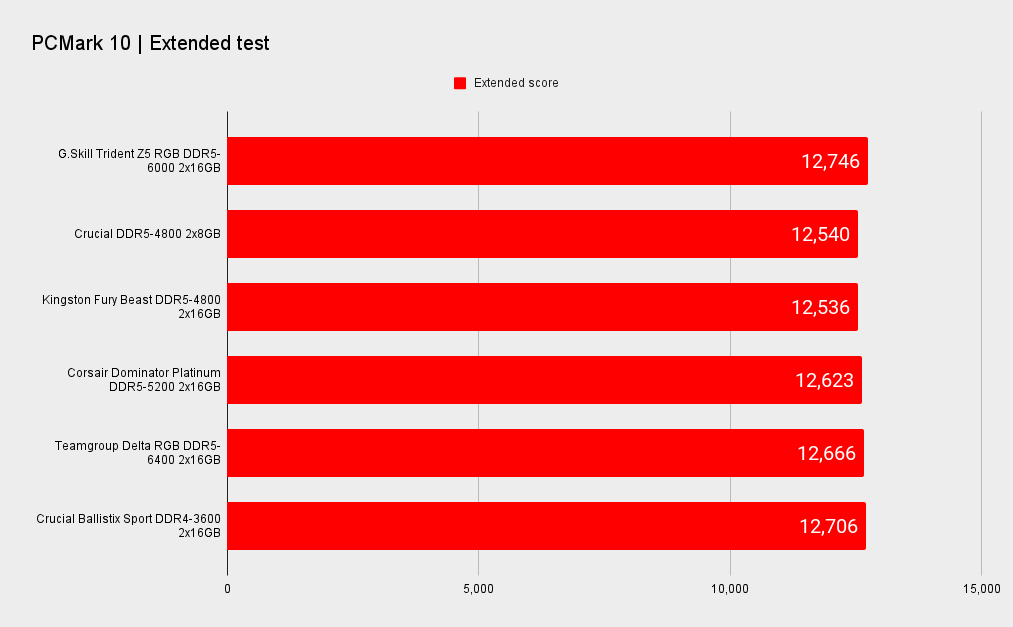
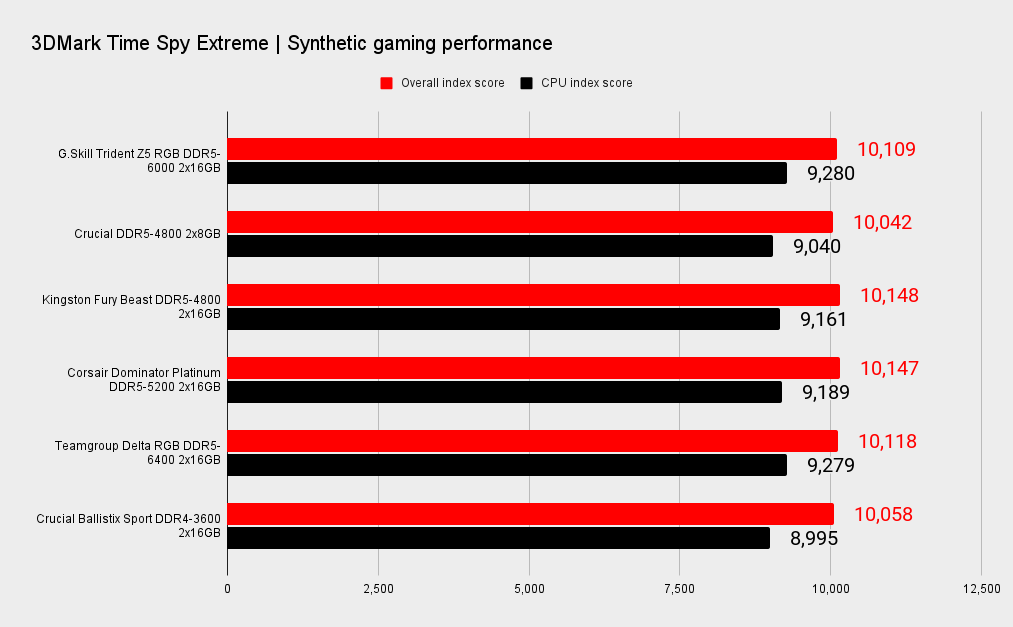
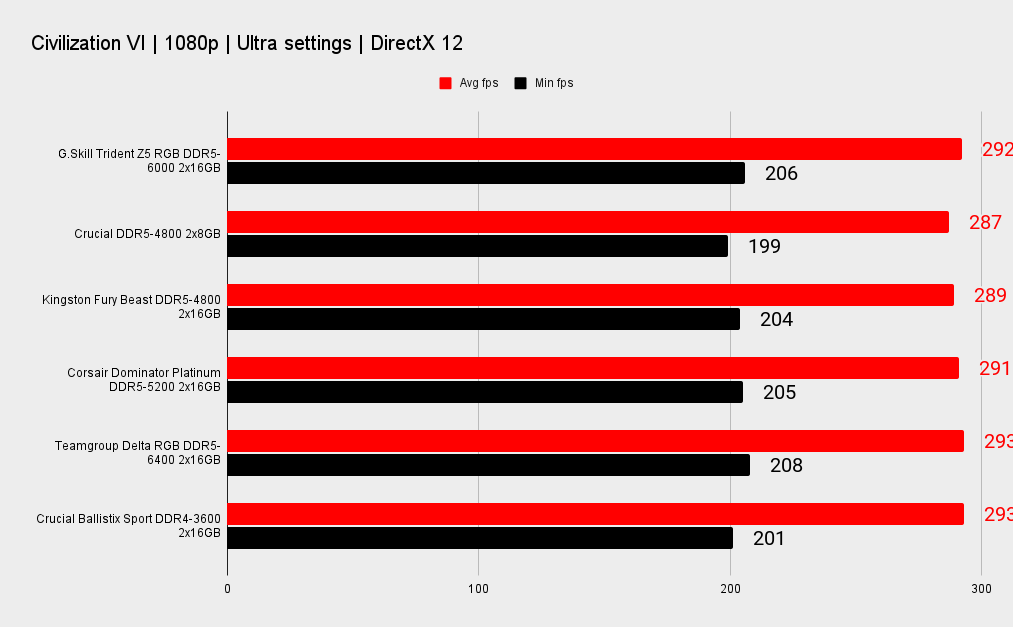
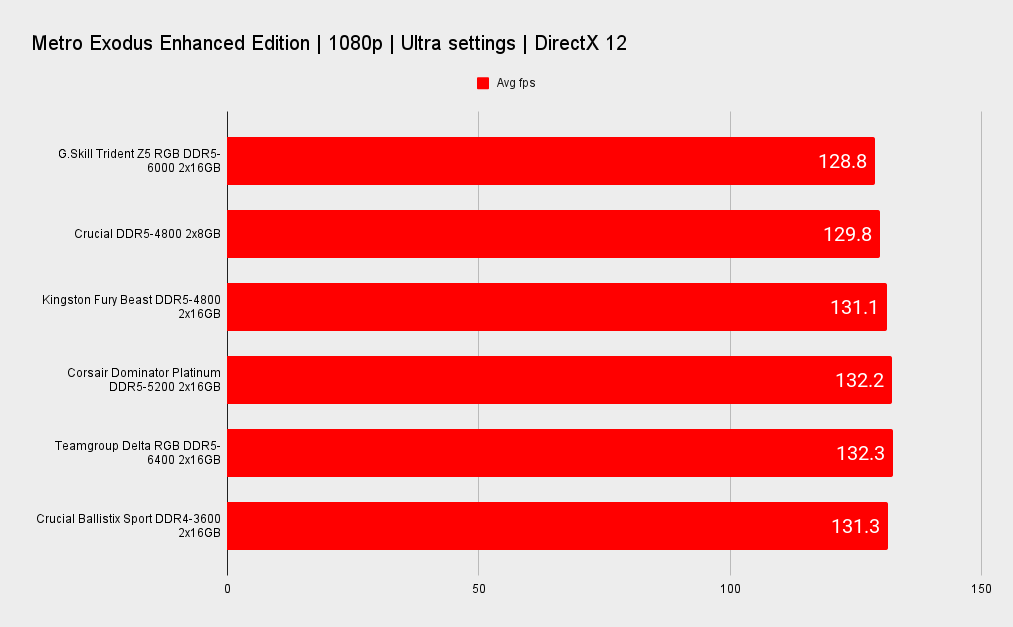
CPU: Intel Core i9-12900K
Motherboard: Asus ROG Maximus Z690 Apex (DDR5)
Gigabyte Z690 Aorus Pro (DDR4)
GPU: Zotac RTX 3080 Ti Amp Extreme Holo
SSD: Samsung 970 Pro 1TB
PSU: Corsair AX1000
Chassis: Thermaltake Core P8
Cooler: MSI MEG CoreLiquid S360
OS: Windows 11 Build 22800.282
File compression and video encoders are good tests and here we see the G.Skill kit performing well. The Handbrake video encoding test shows decent gains as bandwidth increases. The G.Skill kit with its low latency (for DDR5) all but ties the top shelf Team kit. Note that the G.Skill kit easily beats the DDR4 kit in bandwidth sensitive apps.
While bandwidth can make a difference, games tend to prefer low latency, though it varies from game to game. This is where the low latency of a decent DDR4-3600 C16 kit shows itself to be perfectly viable for a 12th Gen gaming system. The raw bandwidth of the G.Skill kit overcomes this though and even in a GPU limited situation like we see with Metro: Exodus, the G.Skill is able to nudge ahead of the DDR4 kit.
Honestly though, at the end of the day, it's not really necessary to shell out big dollars for fast memory. It's more about minimising bottlenecks rather than adding performance per se, so if you’re rocking an Intel Core i9 12900K and a GeForce RTX 3080 or Radeon RX 6900 XT, buying a fast kit is worth it. For a lower spec system, a good DDR4 kit or something in the DDR5-5200 MHz range won’t penalise you in real word scenarios or any tangible situation.
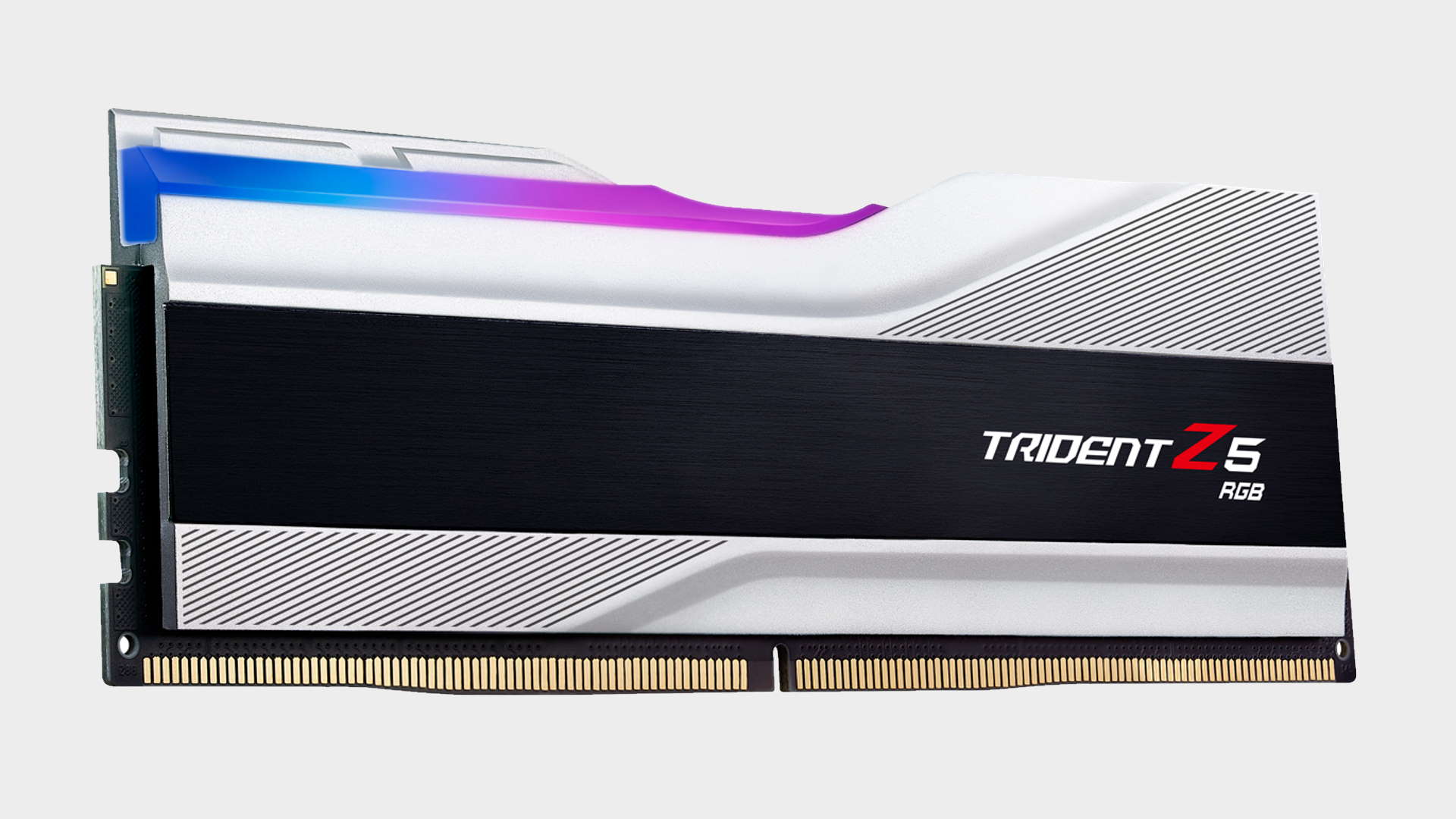
Overclocking the G.Skill kit was an interesting exercise. As we’re still at the dawn of the DDR5 era, it seems as though Samsung based kits are especially rare and widespread support is still a work in progress. Our Asus Maximus Z690 Apex—which is a purpose built DDR5 overclocker—doesn’t have official QVL support for any Samsung based kits at all. Though our kit ran without issue at its rated XMP 3.0 6000 MHz spec.
Better Samsung support will come down the line, though, as G.Skill themselves say the Apex is officially supported along with 12 other boards. We believe that some Z690 BIOSes still have a bit of maturing to do in order to get the best out of Samsung, and for that matter, all DDR5 memory. The kit was able to boot at 6400Mhz C40, though it took a lot of VDDQ Voltage. It’s possible we’re hitting the limits of our CPU though. There’s also the possibility that G.Skill is aggressively binning its ICs in order to reserve them in future kits at 6400 MHz and faster. Those are coming for sure.
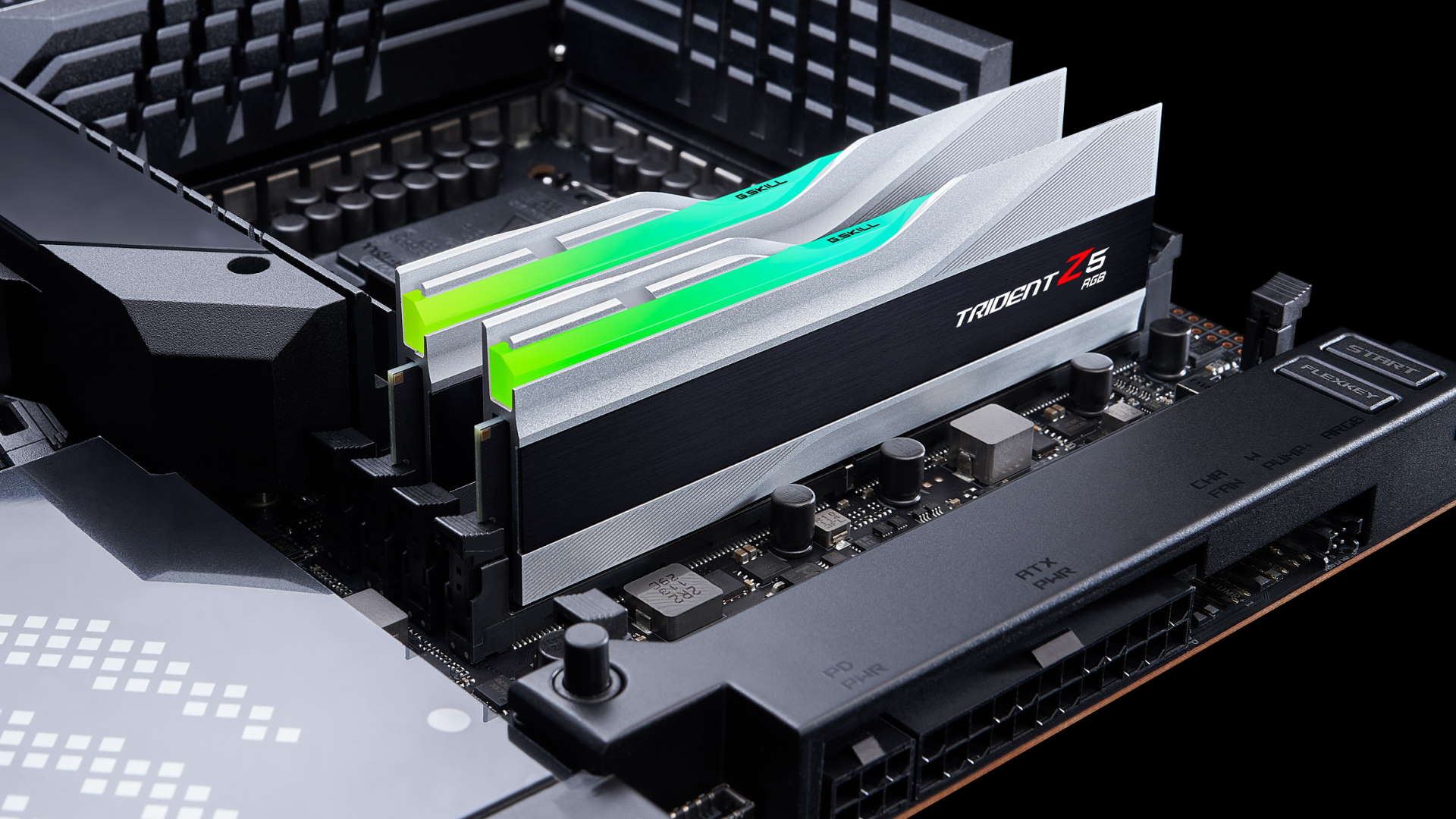
You’ll find cheaper RAM, but you won’t find much better
For all that, I love the G.Skill Trident Z5 kit. It’s fast, it looks great and it’s a good example of what a fast DDR5 launch kit is capable of. You’d be crazy to buy it at scalper prices in December 2021, but even street prices fall a lot.
Should you buy it anyway? Not if you’ve got a low latency DDR4-3200 or 3600 kit you shouldn’t. But, if you’ve got a gaming rig with equally high-end components, then you’ll want a kit like the G.Skill to bring out the best of your system.
The G.Skill DDR5-6000 C36 kit is a strong contender for the best DDR5 kit on the market. Well, lets say it exists, even if it's not truly on the market as of December 2021. You’ll find cheaper RAM, but you won’t find much better. You’ll know if your system deserves such a kit or not.
We’re sure that pricing will improve and, though it's impossible to recommend right now, that will change once supply stabilises. When that happens, DDR5 will become much more compelling. We're sure it won't be too long before this G.Skill Trident Z5 kit will add availability and relative value to the performance and desirability that it already has in spades.
The G.Skill Trident Z5 DDR5-6000 C36 kit is a contender for the best DDR5 kit on the market, but a true analysis of its standing will only come once stocks are on shelves and the pricing becomes reasonable.

Chris' gaming experiences go back to the mid-nineties when he conned his parents into buying an 'educational PC' that was conveniently overpowered to play Doom and Tie Fighter. He developed a love of extreme overclocking that destroyed his savings despite the cheaper hardware on offer via his job at a PC store. To afford more LN2 he began moonlighting as a reviewer for VR-Zone before jumping the fence to work for MSI Australia. Since then, he's gone back to journalism, enthusiastically reviewing the latest and greatest components for PC & Tech Authority, PC Powerplay and currently Australian Personal Computer magazine and PC Gamer. Chris still puts far too many hours into Borderlands 3, always striving to become a more efficient killer.
